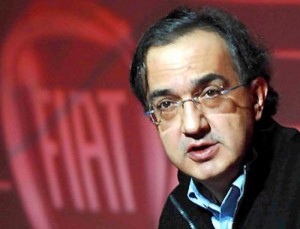Sergio Marchionne, the Chief Executive Officer of both Chrysler Group LLC and Fiat S.p.A posted an explanation of Chrysler’s status yesterday on a Chrysler blog site.
Marchionne was not made available to reporters, and Chrysler has suspended its long-standing sales result press conferences. The privately held company, in which U.S. and Canadian taxpayers hold a ten percent stake, also does not publish financial results.
In the Chrysler bailout, the U.S. Treasury has invested a combined $14.3 billion in the new and old entities, including $1.5 billion for Chrysler Financial and $280 million for the Chrysler warranty program.
Chrysler Group reported yesterday that total U.S. sales in September were 62,197 units, a decrease of 42% compared with September 2008.
Marchionne: “On the issue of Chrysler I think that one of the things you need to be absolutely careful about is that when you start looking at market share data, for any of the automotive producers in the U.S., there are a number of things that have impacted on market share, volumes in the month of September. We have just come off a substantial inducement to consumption that was associated with the Cash for Clunkers program, and that in and by itself is a disturbance that, at least from Chrysler’s standpoint, one, was unexpected and was announced at a time in which our industrial machine was just about ready to get started up and running. Effectively, most of our plants had been out for a substantial part of the spring and part of the summer; and the machines had not come back on until the end of July.
“Secondly, this is a process that we’re going through, and we have been through this on the Fiat side. When I arrived in 2004 we had to go through the same type of painful process of watching market share decline as we cleaned up our commercial practices in the field. And so a lot of the inducements that were being offered in the marketplace by American car manufacturers are beginning to disappear.
(Chrysler was averaging incentives of about $5,500 a vehicle in the months preceding its bankruptcy this spring -KZ)
“So the heavy incentive checks that one could find in most dealers are no longer available, the discipline required to maintain pricing in order to stay profitable in the car making business, the benefits of that philosophy are beginning to work their way through.
We are not the only ones that are adopting this structure ourselves; General Motors has become a lot more disciplined on this than we have been. That is bound initially to cause a contraction of the position because your starting point was exaggerated and so you need to work through this process of cleansing; it’s painful, it looks ugly.
“People sit back and say ‘what are you going to do to try and incentivize the demand, the real issue is that we need to go back to making products that people want at a price that is accessible and defensible in a competitive framework.
All the work that has gone on here since we came in on June 10 has been geared at providing the framework to effectively drive volume over the medium to long term. September is not an indication of future performance. I’m not apologizing for it, it is the consequence of a number of actions that were taken in the past, all of which have culminated in the month of September – you may see similar numbers in October, I don’t know.
Our intention is to improve share from this point on, but I don’t get alarmed. The machine is timed, we’re not bleeding as people think we are, the level of cost consciousness at this house is probably at a historical high, the real important issue is to try and build a future.
And I would just ask you to wait until November and you can see it. The future is a lot a lot better than the market share in September would indicate.

